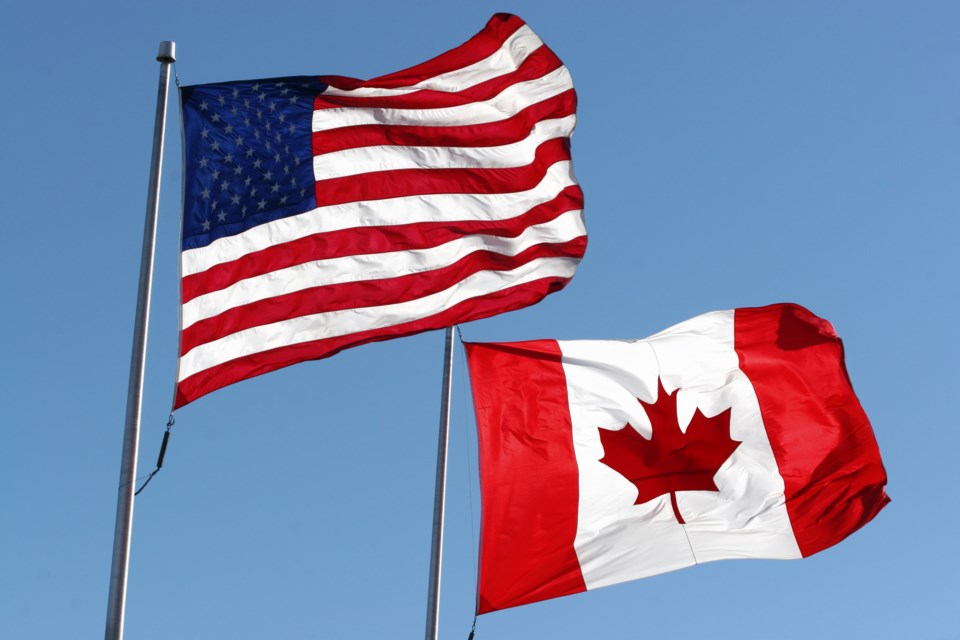The Columbia River Treaty is a landmark water-management agreement, ratified in 1964, by the United States and Canada which aimed to co-ordinate water management within the Columbia River Basin, particularly through the construction of four large dams in the headwaters. Three treaty dams were built in B.C. with an additional dam located in Montana.
Last month, Prime Minister Justin Trudeau and U.S. President Joe Biden announced an “Agreement in Principle” for the modernization of the Columbia River Treaty.
The agreement is the culmination of six years of negotiation and countless environmental studies of the rivers and reservoirs of the region. The negotiations were precedent-setting, with the engagement of two countries, a province and multiple states alongside extensive Indigenous representation.
The proposed modernization has a real chance to better recognize the ecological needs of the region alongside a range of social, cultural and economic impacts in a changing climate.
A treaty for a different time
The original treaty objectives were narrowly focused on flood risk management and hydropower generation, issues that remain prevalent in the basin to this day with the Columbia River system providing approximately 40 per cent of U.S. hydropower.
Demand on hydropower systems is rising in both the U.S. and Canada as both countries move to decarbonize their power grids.
An additional, decidedly more modern, complication is that with inexpensive hydropower the lower Columbia River region has become a hub for data centres, with companies including Google and Microsoft maintaining facilities in the region.
The waters flowing from the Canadian treaty dams pass through additional dams downstream, including 11 hydropower dams on the Columbia River in Washington and Oregon. These are largely run-of-the-river facilities that do not store water, and to recognize the considerable increase in power production enabled by the seasonal storage from the Canadian reservoirs, the Treaty specified the “Canadian Entitlement,” which awarded one-half of the additional American hydropower capacity to Canada.
To help meet the growing electrical demand, each of the four treaty dams created a massive water storage reservoir. Hydroelectric reservoirs are effectively giant batteries that store potential energy over time and allow for the controlled release of water to enable near-year-round power generation. However, this reliability comes at a cost.
The four reservoirs work by annually flooding approximately 600 km of river valleys. The flooding is seasonal, and the yearly cycles of inundation and exposure are lethal to all vegetation and terrestrial life, resulting in ecological wastelands during draw down.
The valleys have been home to Indigenous nations for millennia but were sparsely inhabited by the 1960s and the voices of Indigenous peoples were severely underrepresented in the designing of the original treaty.
Addressing the ecological and social impacts while maintaining the economic outcomes is the key aim of the recent modernization efforts.
Modernizing efforts
A core focus of the treaty modernization process has been to broaden the operational objectives to include ecosystem function as a third priority alongside flood control and hydropower with a further focus on socio-economic benefits and Indigenous cultural values.
To enable greater flexibility in the operations of the three Canadian treaty dams, about one-third of the combined water storage would be available for Canada to use as it sees fit. Consequently, the Canadian Entitlement is to be scaled back as Canada is obliged to release less water to American hydropower dams downstream.
Some of this water available to Canada could help restore river ecosystems — including the biologically rich floodplain woodlands. As a model, the American Libby Dam has shown success in the use of “environmental flows” to help restore downstream environments.
Additionally, efforts to reduce how greatly the water levels change in the various reservoirs could help to lessen the impacts of flooding and aid ecosystem adaptation.
The enhancement strategies will also incorporate Indigenous guidance that encourages a more holistic perspective, and a change in thinking from “trade-offs” to “balance.”
Salmon reintroductions are a priority for Indigenous nations and the treaty modernization would promote transboundary co-operation for salmon restoration. This co-ordination of Indigenous knowledge and western science could help in both ecosystem restoration and reconciliation.
However, for the basin-wide objectives, the Canadian treaty dams are only three of the 55 major dams in the Columbia Basin, along with 10-fold more smaller dams. For salmon recovery and other outcomes, other dams must also contribute toward these restoration efforts.
Read more: Calgary water shortages: Key ways to reduce your water footprint
Extensive efforts will be required to enable mature and juvenile fish passage through the gauntlet of reservoirs and dams, particularly Grand Coulee Dam near the middle of the 2,000-kilometre-long Columbia River corridor. Favourably, the U.S. recently committed US$1 billion for salmon recovery.
The Agreement in Principle provides a promising framework and work is still ongoing to modernize the Columbia River Treaty. This will allow for innovative water management with the hope of reasserting the ecological, socio-economic and Indigenous cultural values that were neglected with the original Treaty: we have a second chance.
![]() Stewart Rood receives funding from the Natural Sciences and Engineering Research Council of Canada (NSERC) and Alberta Environment and Parks, and has received funding from BC Hydro, the Kootenai Tribe of Idaho, and the Ktunaxa Nation Council.
Stewart Rood receives funding from the Natural Sciences and Engineering Research Council of Canada (NSERC) and Alberta Environment and Parks, and has received funding from BC Hydro, the Kootenai Tribe of Idaho, and the Ktunaxa Nation Council.




